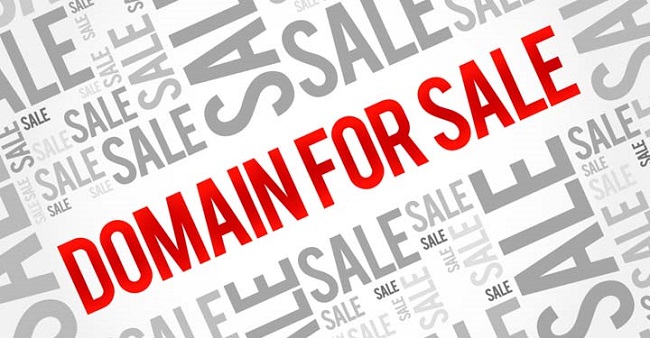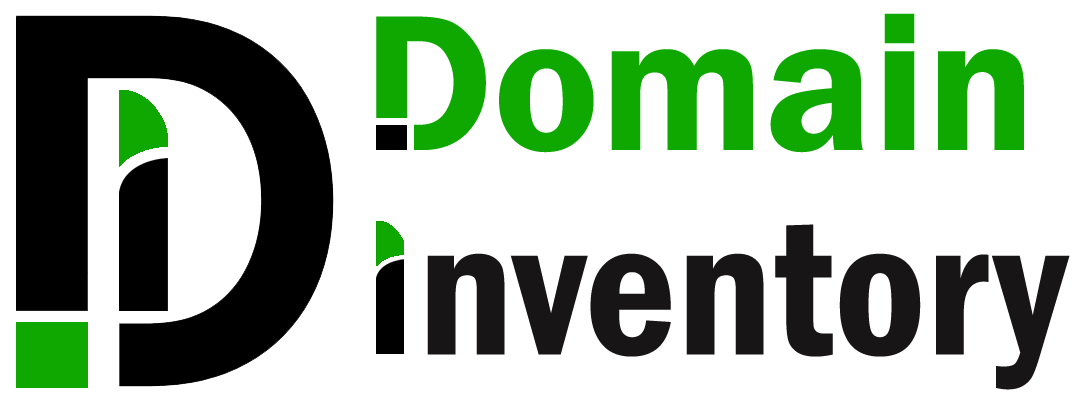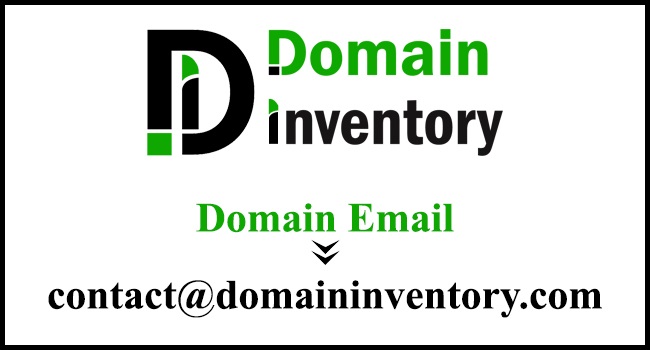Are you sitting on a valuable domain name that you’re not using? Or perhaps you bought a domain name on a whim, but now you realize it could be worth some serious cash? Either way, selling a domain name can be a profitable venture but also a complicated process. How to sell a domain name will help you make money online from these unused assets or even start a new business. In 2023, it was estimated that almost 125 million domains were registered in the U.S. alone. Not only that, but premium domain names have been fetching impressive sales. For example, marketing.com was sold for $2.5 million in 2021.
In this blog post, we’ll walk you through the steps of how to sell a domain name. From assessing the value of your domain name to finding the right buyer and negotiating a deal, we’ll provide you with all the information you need to sell your domain name for a fair price successfully. Whether you’re a seasoned domain name investor or a first-time seller, this guide will give you the tools and knowledge to navigate the domain name selling process confidently.
How To Sell a Domain Name In The Market

Selling a domain name can be profitable but requires careful planning and execution. By determining the value of your domain name, listing it for sale, setting a fair price, marketing it effectively, negotiating with buyers, and transferring ownership, you can increase your chances of success and get the best price for your asset.
Whether you’re a seasoned investor, entrepreneur, or just starting out, these marketplaces offer a range of valuable services to help you buy, sell, and manage domain names. From domain auctions to broker services, our list includes some of the industry’s most trusted and reliable platforms. So, whether you’re looking for a premium domain name or want to sell your own, these marketplaces have covered you.
1. GoDaddy
GoDaddy is a well-known domain registrar that offers a variety of domain extensions and domain-related services, such as web hosting and email. In addition to registering new domain names, GoDaddy also offers a marketplace for buying and selling existing domains. GoDaddy’s marketplace offers several ways to sell your domain, including auctions and buy-it-now options, which can help you reach potential buyers faster.
The platform is user-friendly and offers various tools to help you set your price and negotiate with potential buyers. GoDaddy also offers domain appraisal services and provides additional resources to help sellers maximize their chances of a successful sale. Additionally, GoDaddy has a large customer base and extensive marketing reach, which can increase the visibility of your domain listings.
2. Namecheap
Namecheap is a domain registrar and marketplace that offers various domain extensions, web hosting, email, and security services. Namecheap’s marketplace allows users to list their domain names for sale, and the platform charges a commission when a domain sells. The marketplace is easy to use and provides tools to help you set your price, negotiate with potential buyers, and manage your domain listings.
Namecheap also offers domain appraisal services to help you determine your domain’s value, and they provide additional resources to help you market your domains effectively. One advantage of using Namecheap is that they have a large and engaged community of domain buyers and sellers, which can help increase the visibility of your listings and attract potential buyers.
3. Sedo
Sedo is one of the largest and most established domain marketplaces, with millions of domains listed for sale. Sedo provides a platform for buyers and sellers to connect and conduct transactions, offering various tools for domain valuation, negotiation, and transfer. They charge a commission on domain sales, and the platform is known for its transparency and security.
One unique feature of Sedo is their domain parking service, which allows you to earn money from advertising revenue while you wait for your domain to sell. Sedo also offers a range of additional services, including domain appraisal, domain brokerage, and domain transfer assistance. Sedo’s large and diverse customer base can help you reach potential buyers worldwide.
4. Sav
Sav is a domain selling marketplace that focuses on premium domain names. They offer a platform for sellers to list their high-value domains and connect with potential buyers. Sav provides domain valuation services to help you set your price and offers various tools to help you negotiate and manage your domain listings. The platform charges a commission on domain sales, and they have a team of experienced brokers who can assist with the selling process.
One advantage of using Sav is their expertise in selling high-value domains, which can help you maximize your sale price. Sav also offers additional services, such as domain financing and leasing, to help buyers and sellers complete transactions more easily.
5. Afternic
Afternic is a domain marketplace owned by GoDaddy. It provides a platform for users to list their domain names for sale and connects them with potential buyers. Afternic offers various tools for domain valuation, negotiation, and transfer, and they charge a commission on domain sales. The platform is user-friendly and offers multiple ways to sell your domain, including auctions and listings with fixed prices.
One advantage of using Afternic is their integration with GoDaddy, which can increase the visibility of your domain listings and help you reach a larger audience of potential buyers. Afternic also provides additional resources to help sellers maximize their chances of a successful sale, including marketing tips and domain appraisal services.
6. Dan
Dan is a domain selling marketplace that provides a secure and transparent platform for buyers and sellers to conduct domain transactions. Dan offers a range of tools and services to help you sell your domain, including domain valuation, negotiation, and transfer assistance. One unique feature of Dan is their domain financing option, which allows buyers to pay for a domain over time instead of upfront.
Dan charges a commission on domain sales, but they do not charge any listing fees. The platform is user-friendly and offers various ways to sell your domain, including auctions and listings with fixed prices. Dan also provides additional resources to help you market your domain effectively, such as domain appraisal services and domain brokerage assistance.
Overall, each domain selling marketplace offers its own unique features and advantages. Choosing the right marketplace for your domain depends on your specific needs and goals as a seller. Consider commission rates, available tools and services, marketing reach, and community engagement. It is also important to research each platform thoroughly and compare their features and pricing before making a decision.
How to Sell a Domain Name With Advertising And Social Media Posts

If you’re looking to sell a domain name, advertising, and social media can be powerful tools to help you reach potential buyers. With targeted advertising and strategic social media posts, you can get your domain name in front of the right people and increase the chances of making a sale. Here are some steps you can take to sell your domain name using advertising and social media:
Step 1: Determine your target market
The first step in selling your domain name is to determine your target market. This involves identifying who would be interested in buying your domain name. Consider the niche or industry your domain name is related to and the types of businesses or individuals that could benefit from owning it. By understanding your target market, you can create a marketing strategy that is tailored to their specific needs and interests.
Step 2: Create a website or landing page
Once you’ve identified your target market, the next step is to create a website or landing page that provides information about the domain name you’re selling. Your website or landing page should include details about the domain name, its benefits, and its potential uses. You can also include information about pricing and any other terms and conditions that may be relevant. Creating a professional-looking website or landing page can establish credibility and make it easier for potential buyers to learn more about your domain name.
Step 3: Use pay-per-click advertising
Pay-per-click (PPC) advertising is a powerful way to drive targeted traffic to your website or landing page. Platforms like Google Ads and Facebook Ads allow you to create ads that are targeted to specific audiences based on demographics, interests, and behaviors. By creating ads that are tailored to your target market, you can increase the chances of reaching potential buyers and generating leads.
Step 4: Utilize social media
Social media can be a great way to promote your domain name and reach a wider audience. Create social media profiles on platforms like Twitter, LinkedIn, and Facebook and share information about your domain name with your followers and other users who may be interested. You can also join groups and communities related to your domain name’s niche or industry to connect with potential buyers and share your listing.
Step 5: Engage in outreach
Outreach is another effective way to promote your domain name and connect with potential buyers. Reach out to individuals or businesses that may be interested in your domain name directly via email or social media. You can also list your domain name on domain marketplaces like Sedo, GoDaddy Auctions, and Namecheap Marketplace to increase its visibility.
Step 6: Offer incentives
Finally, consider offering incentives to potential buyers to encourage them to purchase your domain name. This could include a discount, a bonus, or any other value-added service that makes your domain name more attractive. By providing incentives, you can increase the perceived value of your domain name and make it more likely that buyers will take action.
Selling a domain name can be challenging, but with the right strategies in place, you can increase your chances of success. By using advertising and social media, you can reach a wider audience and connect with potential buyers who may be interested in your domain name. By following these steps, you can create a marketing plan tailored to your target market and increase the chances of making a sale.
How to Sell a Domain Name: Basic Steps

Selling a domain name can be lucrative but requires careful planning and execution. Knowing how to sell your domain name in the market can help you reach a wide audience and get the best price for your asset. In this article, we’ll discuss the steps involved in selling a domain name and provide tips for maximizing your chances of success.
Step- 1: Determine the Value of Your Domain Name
Before you put your domain name up for sale, it’s essential to determine its value. Several factors can influence the value of a domain, including its age, popularity, and keywords. Using online tools like GoDaddy’s domain valuation tool or EstiBot can give you an estimate of your domain’s worth. However, keep in mind that these estimates are not always accurate and may not reflect the true market value of your domain.
Step- 2: List Your Domain Name for Sale
Once you’ve determined the value of your domain name, you can list it for sale on various domain marketplaces, including Sedo, Flippa, or GoDaddy Auctions. These platforms allow you to reach a broad audience of potential buyers and increase your chances of finding the right buyer for your domain.
Step- 3: Set a Price
You can set a fixed price for your domain name or list it for auction. Setting a fixed price can make it easier to sell quickly, but an auction can drive up the price and result in a higher sale. When setting a price, consider factors like the domain’s age, popularity, and potential for future use. You may also want to research comparable sales to get an idea of what similar domains have sold for in the past.
Step- 4: Market Your Domain
Marketing your domain is crucial for reaching potential buyers. You can use various marketing channels to promote your domain name to potential buyers, including social media, email, or paid advertising. Creating a landing page or website that showcases your domain and its potential uses can also help attract potential buyers.
Step- 5: Negotiate with Buyers
When a buyer expresses interest in your domain name, be prepared to negotiate. Try to find out the buyer’s budget and determine a fair price for both parties. Keep in mind that some buyers may try to negotiate aggressively, so be prepared to walk away if you can’t reach a mutually beneficial agreement.
Step- 6: Transfer Ownership
Once you’ve agreed on a price, you’ll need to transfer domain name ownership. This typically involves transferring the domain to the buyer’s registrar account. The process can vary depending on the domain registrar and may involve additional steps like transferring funds and verifying the buyer’s identity.
Frequently Asked Questions
How much can you sell a domain name for?
Now that you know how much your domain is worth, you can ask for what it’s worth. Given the vast range of possible domain prices, this can be challenging. The average sale price of a domain name is in the three- to four-figure degree, but the highest-end domains can fetch six- or seven-figure sums.
Can you make money with domain names?
Domain names are like prime real estate online, with Cars.com selling for $872 million. In theory, you might make a lot of money by selling a domain if you picked it at the appropriate time and picked a name with plenty of promise.
Why would I sell my domain name?
To sell a domain name could be for one of two main reasons. First, you may sell your domain name if you no longer require it. This is the case if you buy a domain name but then decide to shut down your website or buy a domain name but never actually use it. Instead, you could study domain name sales to generate income.
Is GoDaddy good for domain registration?
Since GoDaddy was one of the earliest widely recognized domain names, it’s natural to assume that it’s also among the finest registrars today. It has expanded over the years to include website hosting, email, marketing tools, and a website creation tool. A one-stop shop for all your online service needs.
Is it illegal to sell domain names?
Domain name trading is perfectly legal. Cybersquatting, where a person purchases a domain with a trademarked name to profit off the trademark holder’s goodwill, is not lawful.
Conclusion
Domain names are an essential asset for individuals and businesses. Not only do they work as website addresses, but they’re also a key branding element. Therefore, buying and selling domains has become a sought-after strategy to make money online.
You can earn money by listing parked or unused domains on marketplaces and auction sites or creating landing pages. However, regardless of the platform, this requires understanding the domain market and following the best practices.

